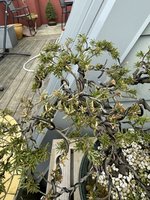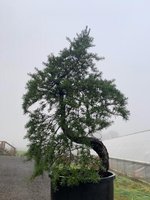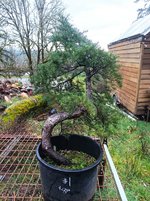I purchased this collected double trunk Western Hemlock last fall (2023). The only thing I've done so far is remove some exposed burlap and excessive dense soil on top of the pot and replaced it with pine mulch for the winter. Currently one of the trees has a few branches that look like they're drying out and curving up. It's never been dry. It lives in partial shade and sun depending on the time of day. It lives at 4000' elevation in a 6b zone and snow on and off throughout all of the winter.
Any thoughts on what could be causing these branches to do this? Only thing I can figure out, possibly blight?
Thanks for your help/suggestions.
Video showing the branches:
https://www.instagram.com/p/C5Y0Jt2xCj_/?igsh=cGNzYWJ3ODBuMmRz



